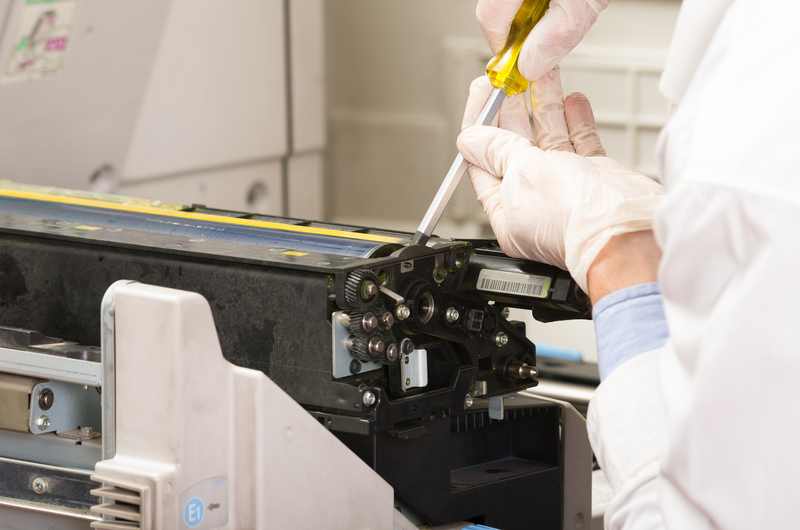A Practical Guide to Safe Removal and Disposal of PPE Waste
PPE waste disposal is an essential aspect of health and safety in workplaces, healthcare settings, communities, and at home. With the widespread use of personal protective equipment (PPE) such as masks, gloves, gowns, and face shields, proper disposal practices protect both human health and the environment. This practical guide will explain the safe removal and responsible disposal of PPE waste in various settings. We will cover regulations, step-by-step disposal procedures, and provide practical tips to minimize risks and promote sustainable habits.
Understanding PPE Waste
Personal Protective Equipment waste refers to any used or discarded item intended to protect people from exposure to hazards. During the COVID-19 pandemic, worldwide PPE waste increased significantly, highlighting the importance of safe PPE removal and disposal to avoid environmental contamination and disease spread.
Common Types of PPE Waste
- Masks: Surgical masks, N95 respirators, fabric masks
- Gloves: Disposable nitrile, latex, vinyl, or polyethylene gloves
- Gowns: Single-use medical, plastic, and impermeable protection gowns
- Face Shields and Goggles: Reusable and single-use variants
- Shoe Covers and Hair Covers

Why Is Safe Removal and Disposal of PPE Waste Important?
Improper PPE disposal presents serious threats to public health, safety, and the environment. The following list highlights the main risks:
- Disease Transmission: Used PPE can harbor pathogens, increasing risk of infection.
- Environmental Pollution: Most disposable PPE items are made from plastics that pollute rivers, oceans, and soil.
- Wildlife Hazards: Animals can accidentally ingest or become entangled in discarded PPE materials.
- Legal Consequences: Many countries impose strict regulations on biomedical waste handling and penalties for non-compliance.
Global Regulations and Guidelines
Authorities such as the World Health Organization (WHO), Centers for Disease Control and Prevention (CDC), and local environmental agencies have established protocols for PPE waste removal and disposal. Adhering to these standards is essential for compliance and safety.
- Medical Settings: Follow OSHA standards and local medical waste management rules.
- Community & Household: Local councils or municipalities offer specific PPE waste collection systems.
- Industrial/Workplace: Employers must implement standard operating procedures according to governmental OH&S guidelines.
- Special Guidance: Quarantined or COVID-exposed waste may require double-bagging and special handling to protect sanitation workers.
Key Principles for Safe Handling
- Always treat used PPE as potentially contaminated.
- Use appropriate personal protective measures when removing even used PPE.
- Dispose of PPE only in designated containers or as directed by your local authority.
- Never mix PPE waste with recyclables or household garbage.
Step-By-Step: Safe Removal of PPE
The first step to safe PPE disposal is the correct removal technique (often called "doffing" in medical terminology). Improper removal increases the risk of self-contamination. Here's a safe, standard procedure for the most common types of PPE:
How to Remove Gloves Safely
- Pinch and Hold: With your dominant hand, pinch the outside of one glove at the wrist.
- Peel Away: Peel the glove away by turning it inside out, holding it in your gloved hand.
- Insert Fingers: Slide an ungloved finger under the wrist of the other glove - do not touch the outside surface.
- Peel and Dispose: Peel this glove inside out over the first glove and dispose of both safely.
How to Remove a Mask Correctly
- Clean Hands: Always sanitize your hands before removing your mask.
- Untie or Remove Loops: Handle the mask only by the ties or ear loops.
- Avoid Face Contact: Do not touch the front of the mask.
- Dispose: Place the mask directly into a lined, dedicated PPE bin.
Taking Off Gowns and Face Shields
- Gowns: Unfasten ties, carefully pull away from the body, turning inward, and roll into a bundle. Dispose in a PPE-specific bin.
- Face Shields: Remove from the back or side bands, avoiding contact with the front. Clean reusable shields with proper disinfectant or dispose of single-use shields as contaminated waste.
Proper Disposal of PPE Waste
Once PPE has been doffed correctly, safe and responsible PPE waste disposal is crucial. Disposal methods depend on your setting:
In Healthcare and High-Risk Environments
- Designated Bins: PPE waste should be placed in marked, leak-proof containers lined with plastic bags (often color-coded yellow or red for infectious waste).
- Sealing: Once two-thirds full, bags must be sealed securely and never overfilled.
- Storage: Temporarily store in a secure, ventilated area separate from routine waste.
- Collection: Only trained personnel should handle and transport these bags to the facility's designated medical waste area for further processing (incineration, autoclaving, etc.).
At Home or in Communities
- Preparation: Place used PPE (e.g., masks and gloves) in a small plastic bag. Tie securely.
- Segregation: Do not mix with other household waste. Label 'PPE Waste' if possible.
- Disposal: Place the bag in your general waste bin unless local authorities provide a dedicated PPE collection point.
- Sanitize: Wash your hands thoroughly with soap and water after handling PPE waste.
Workplace and Public Spaces
- Installation of Bins: Provide separate, labeled PPE waste bins at entrances/exits and common areas.
- Regular Collection: Waste should be collected at least daily and transported following regulatory guidelines.
- Awareness: Employees and visitors should be educated about the correct bins to use for disposal of PPE waste.
What Happens to PPE Waste? Final Treatment Methods
PPE waste collected from healthcare, households, and public settings must undergo specific processing before final disposal. Common approved treatment options include:
- High-Temperature Incineration: Destroys pathogens and reduces volume, but may emit pollutants if not managed correctly.
- Autoclaving: Uses steam under pressure to sterilize the waste before landfilling.
- Chemical Disinfection: For certain PPE components (e.g., reusable goggles), safe chemical cleaning is effective.
- Safe Landfilling: After decontamination, non-recyclable PPE waste is typically disposed of in engineered landfills.
Emerging technologies, such as pyrolysis and advanced recycling, are also being tested to reduce the environmental impact of PPE waste.
Reducing the Environmental Impact of PPE Disposal
Sustainable PPE waste management not only ensures safety but also protects the environment. Here are some practical ideas to reduce your PPE waste footprint:
Adopt Reusable PPE Where Safe
- Invest in washable fabric masks, reusable face shields, and goggles for low-risk environments.
- Follow strict cleaning protocols for all reusable gear.
Promote Proper Segregation
- Educate staff and families to avoid mixing recyclable, hazardous, and regular waste streams.
- Place clear signage above bins to improve compliance.
Choose Eco-friendly Alternatives
- Support brands and manufacturers using biodegradable materials for disposable PPE.
- Encourage suppliers to invest in responsible PPE product design with environmental certifications.
How to Raise Awareness and Train Individuals
Regular training and awareness campaigns lead to better habits for safe removal and disposal of PPE waste. Here's how you can help:
- Distribute Educational Material: Posters, flyers, and videos explaining step-by-step PPE doffing and disposal.
- Host Training Sessions: Both in-person and online programs for staff, families, or community groups.
- Encourage Reporting: Set up a system to report incorrect PPE handling anonymously.

Frequently Asked Questions (FAQ) On PPE Waste Disposal
Can I Recycle Used PPE?
No, most used PPE, especially masks and gloves, cannot be recycled under current guidelines due to contamination risks. Always dispose of these items in the general or PPE-specific waste stream.
How Often Should PPE Waste Bins Be Emptied?
Daily or when two-thirds full. Overfilling increases the likelihood of spillage and contamination.
What If I Accidentally Mixed PPE Waste With Regular Waste?
Remove the entire bag if possible and dispose of it as PPE waste. Disinfect bins and surfaces, and thoroughly wash your hands.
Do Cloth Masks Count as PPE Waste?
Only discard cloth masks when damaged or heavily soiled, otherwise wash and reuse according to manufacturer's instructions.
Conclusion: Make Safe PPE Waste Disposal Part of Your Routine
The ongoing need for PPE waste disposal in healthcare, households, and workplaces makes it crucial to understand correct removal and disposal procedures. Following safety guidelines, being aware of environmental issues, and providing training can drastically minimize health risks and the environmental impact of PPE litter.
By adhering to these practical, step-by-step recommendations and staying up to date with evolving guidelines, you play a vital role in protecting your community and our planet. Safe PPE removal and disposal is not just a regulatory requirement--it's everyone's responsibility!
